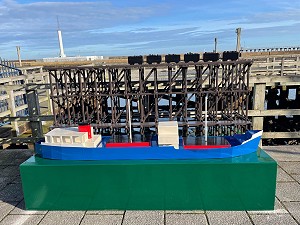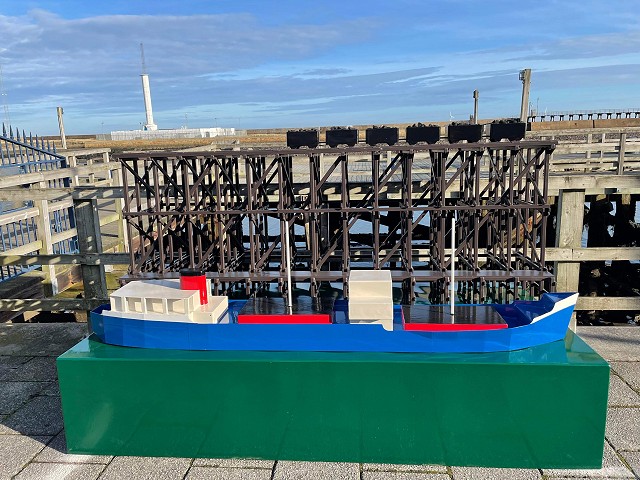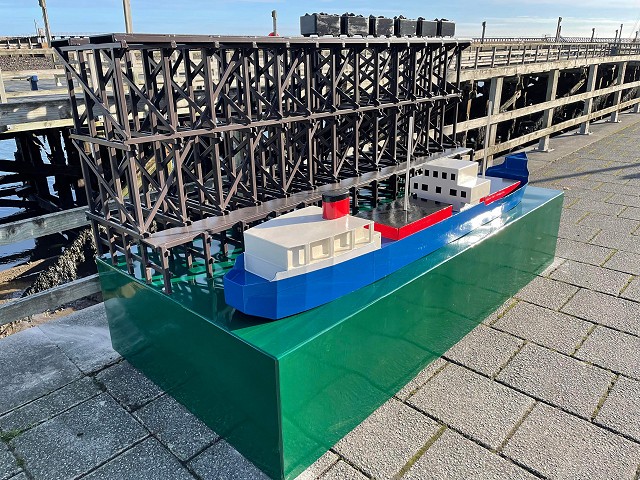Staithes Sculpture

This sculpture was commissioned by former County and Blyth Town Councillor Gordon Webb from his Northumberland County Council Members Local Improvement Schemes funding as a reminder of the importance of the Staithes in the industrial history of Blyth.
Before the construction of the staithes, the method adopted for the shipment of coal was to bring loads from Plessey pits in wagons and deposit them on the quayside. The coal was then shipped by loading it into barrows. This arrangement continued until about 1788 when the first staithes were built. The wagons full of coal could then be run onto the staithes by horses.
With the development of collieries in the area it was necessary for means to be provided for their output to be shipped and it was realised at this time that there were great possibilities for development on the river. New staithes were built and were put into use in 1850. As a result of the new railway access to the river and the provision of additional staithes, accommodation was found for the output of Bedlington, Netherton and, later, Bebside collieries.
In October 1867 the Cowpen Coal Company submitted their plans for three spouts which they proposed to erect and these were approved. With the improvements that had been effected and the growth of coal shipments it became increasingly obvious that more accommodation for coal shipments was required on both sides of the river. Arrangements were made in 1886 for the construction of further facilities.
The staithes were built under a joint agreement with the North Eastern Railway Company with the Harbour Commissioners being responsible for the substructure (bottom part) and the water area, and the railway company to provide the superstructure (upper level) and equipment.
Coal Shipments
1883 - 146,264 Tons
1886 - 583,484 Tons
1887 - 1,018,355 Tons
1897 - 2,700,000 Tons
The West Blyth staithes and the staithes on the Cambois side of the river were made famous in the 1971 Michael Cain film 'Get Carter'.
The substructures are still owned by the Harbour Commissioners and they are now listed buildings.


Designed and fabricated by Blyth Bespoke Fabrication

